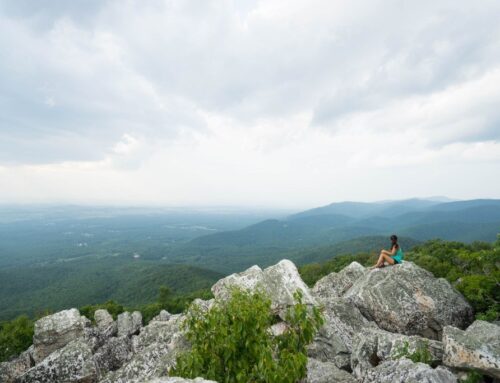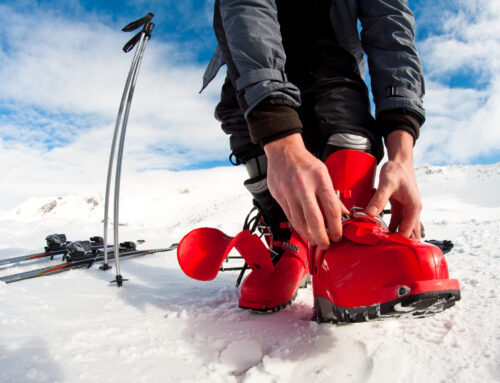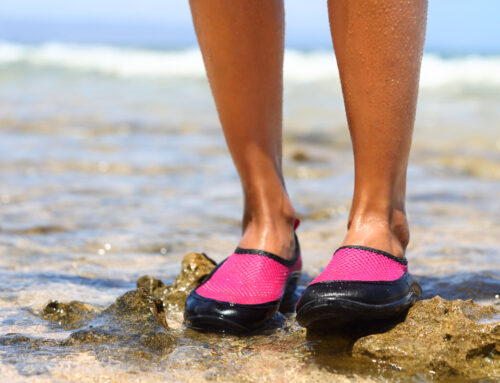Updated February 23, 2021
Feeling stuck in the city? Is winter laziness taking over and the couch is your new favorite spot? Are your days feeling too short, too cold, and lacking sunlight? We’ve felt the winter blues. Don’t let the cold and dark stop you from getting outside! Hiking in winter is a great activity to get outdoors, get your body moving, and enjoy some fresh air, even when it’s cold out. We put together our best tips for hiking in snow and ice, as well as our favorite gear recommendations so you can get outside and explore nearby winter wonderlands safely this winter.
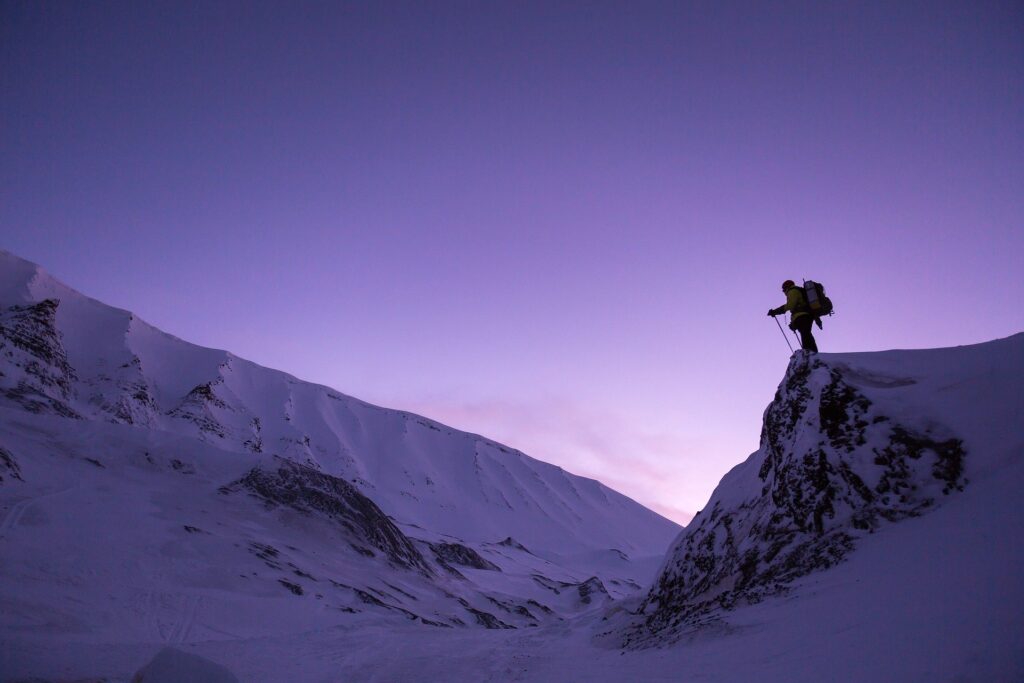
Top Tips for Staying Safe and Warm While Hiking in Winter
1. Plan your route & timing in advance
With winter hiking, it’s especially important to plan your route in advance for a few reasons. First, you’ll know where you’re going in the event that trails are covered in snow. Second, you’ll be able to plan the appropriate gear to bring to stay safe and warm on the trail. If you’re going to use a map on your phone, don’t forget to bring a thermal phone case so your phone doesn’t die on the trail from the cold weather!
You can also check out recent reviews on a website like AllTrails to get an idea of the more recent trail conditions. Based on the reviews, you can determine if it’s a good winter trail option or one whose conditions aren’t favorable. Daylight hours are also shorter in winter, so it’s important to plan your route and hit the trail early to avoid being out in the dark (or bring flashlights and headlamps if you plan to hike in the dark).
In the winter months, trails with inclines will help keep your body temperature up and keep you warm. You can also plan your route to maximize the about of uphill hiking you’ll be doing.
Winter hiking also tends to take longer than summer hiking as it’s possible to encounter more unexpected obstacles (make sure to avoid routes that require stream crossings) and move a bit slower. Find a trail that matches your experience level and what you need for that day – something flat and easy, longer mileage, a loop trail, or something that takes you up some serious elevation gain for awesome winter views.
2. Check weather forecasts
After you pick your trail and plan your route, check what the weather forecast looks like for your day so that you can fully plan what gear you need. We usually use AccuWeather for the most up-to-date, accurate forecasts for specific trails or park areas.
Keep in mind also that conditions can often change quickly in the winter months. A forecasted sunny day can sometimes bring snow, rain, or slush up in the mountains! To account for changing weather conditions, we recommend bringing layers of clothes (more recommendations below), not just one big coat so you’re ready to add or decrease layers as needed.
3. Know the risks of hiking in winter
There are certain conditions and risks that result from spending a lot of time hiking in snow. Some of these can cause permanent damage to your body and health, and should be avoided at all costs. Common winter hiking risks include:
- Hypothermia – Hypothermia is a life-threatening condition that happens when the body loses heat faster than it can produce it. When your body temperature drops below 95 degrees (Fahrenheit), your organs can’t function normally and you’re at risk for heart failure. Yep – it’s extremely scary stuff. You can prevent hypothermia by wearing plenty of warm, thermal layers and bringing extras just in case. We’d also strongly recommend bringing some kind of external heat source, like hand warmers or a water bottle with hot water.
- Frostbite – Frostbite is an incredibly painful condition that occurs when the skin begins to freeze. It’s most common on the extremities, like fingers, toes, and around your face. The #1 easiest way to prevent frostbite is by wearing coverings on those areas, and providing external heat via hand warmers, heated socks, or heated gloves to those places if they begin to get unbearably cold.
- Dehydration – Dehydration is always a risk when performing any type of physical activity, but it’s often mistakenly associated with hot temperatures. This is false. Dehydration is just as common in the winter as in the summer, and you can very easily mitigate this risk by packing plenty of water and sipping it as you hike.
- Wind burn – Wind burn is a condition of the skin that is caused by prolonged exposure to cold, windy conditions. There’s a pretty good chance you’ll get this on your face if you’re hiking in cold temperatures for hours on end. Symptoms include red, painful areas on the skin that can potentially peel (just like sunburn). While this is less serious than some of the other risks on our list, it’s still painful and can be mostly prevented by covering as much of your body and face as you can.
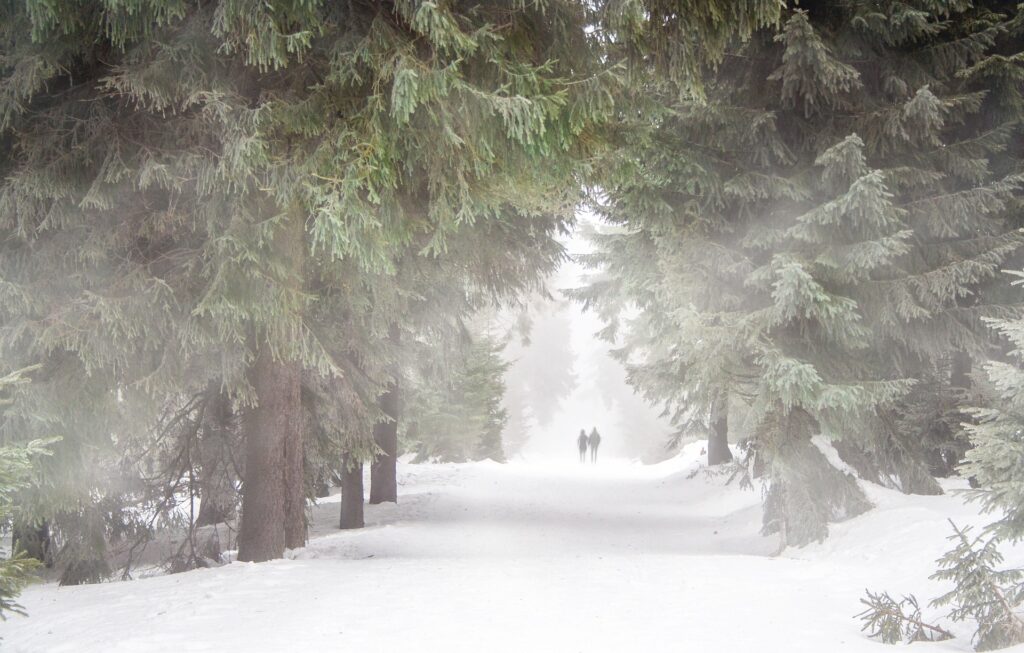
4. Wear lots of layers
When hiking in the winter, you want to layer up, for more reason than one. Why? A number of layers help you to regulate your body heat and protect it from changing weather conditions, no matter what they are.
In the winter months, you want to be prepared to stay warm, stay dry, be prepared for cold wind, all while keeping yourself from sweating and overheating. There are a lot of different conditions to consider! It’s all about waterproofing your outermost layer and using moisture-wicking clothing as your base layer so you don’t keep sweat next to your body. We recommend the following layers for a winter hike to prepare for all conditions from the innermost layer to the outside layer:
- Moisture-wicking base layers (top and bottoms) closest to your body to keep sweat away
- Warm fleece mid-layer
- Waterproof shell or ski jacket
- Hiking pants (read our guides on women’s and men’s hiking pants)
- Hand warmers
- Thermal neck gaiter
We’ve got a whole list later in this article with our recommendations for what to wear and bring with you while hiking in the snow. Read on to learn more!
5. Proper winter footwear is crucial
Just like wearing layers to keep you from getting cold and wet, the key for winter hiking is also footwear that keeps your feet dry. Waterproof boots with good treads that can handle all terrains are a must-have for winter hiking. You can also opt for insulated hiking boots for a bit of extra warmth and protection on extra cold days. Scroll down for some of our favorite boot recommendations!
Socks are another important consideration – when in doubt, wool socks are always a reliable choice to keep your feet warm and dry in the winter.
Aside from boots with good traction and socks that will keep your feet dry, you can also add micro spikes or metal crampons (chains or metal spikes that attach to the bottom of your shoes) to give your better traction on icy terrains.
6. Stay hydrated and bring snacks
You can still get very dehydrated while hiking in winter! Many winter hikers don’t realize they’re getting dehydrated. If you feel thirsty, you’re already dehydrated so make sure to bring lots of water in your water bottle no matter the season. Dehydration also expedites the start of hypothermia, which is especially important to be aware of in winter outdoor hikes. Exercising in the wintertime also burns more calories, so be sure to bring snacks, an easy-to-go meal, or something for a “pick me up” to keep yourself nourished and warm too.
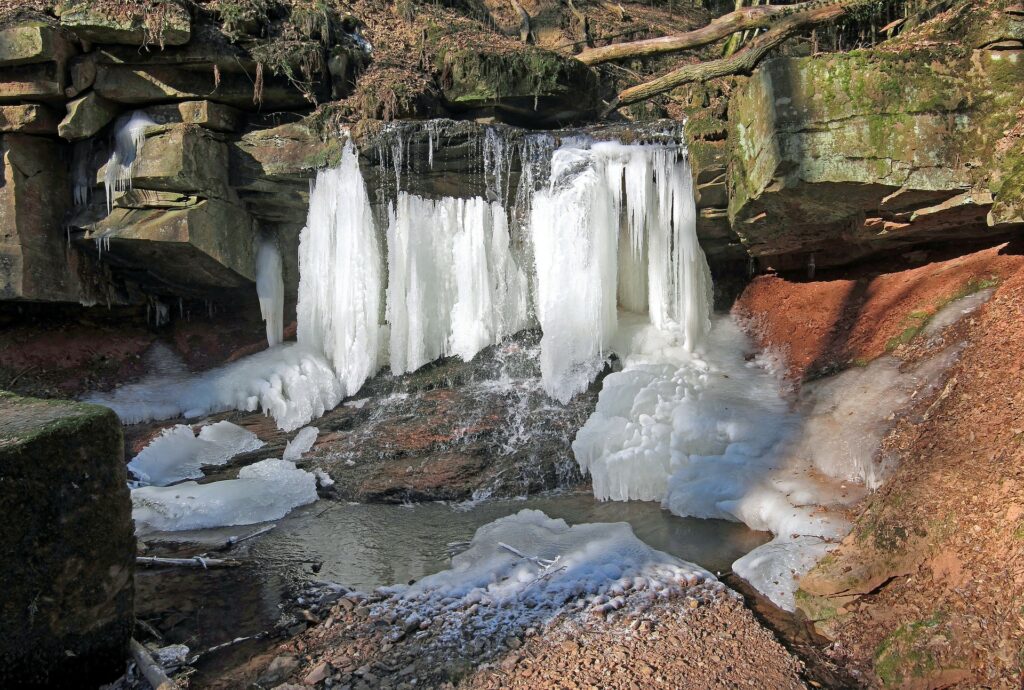
7. Bring external heat sources
Sometimes, a well-insulated set of outerwear isn’t enough, and you may need some external heat to warm yourself up on especially cold days. For this, we’d recommend hand warmers (either traditional ones or rechargeable electric ones) and toe warmers or heated socks for your feet. If you do a ton of winter hiking, you may want to consider investing in a pair of heated gloves as well to keep your hands nice and toasty all day long.
Another great way to stay warm while hiking in snow is to bring an insulated water bottle with hot water or tea that you can drink to stay warm. We love Hydro Flask for this, and can often be found in the winter lugging around our 40-oz bottle full of warm herbal tea to drink when we’re feeling especially chilly.
Some hikers people even pack a lightweight Jet Boil and a gas canister for especially long hikes so they can heat water along the way. This may be overkill, but it’s an option if you’re planning to be out for a full day and want the option to heat your water or food.
8. When in doubt, play it safe
Sometimes, the weather takes an unpredictable turn or a trail looks a lot more dangerous than you expected. There’s only so much you can control, especially in the winter when conditions can be quite inhospitable. When you’re hiking in winter, you can come across dangerous situations like avalanches, black ice, high winds, and more, and these dangers are heightened when you take unnecessary risks.
If you show up for a hike and it looks dangerous, don’t do it. Or, if you’re on a hike and there’s a section that looks impassable, turn around. Follow your gut and your instincts as a hiker. While hiking in snow is usually perfectly safe, there’s no point in risking your safety or health to do something that looks dangerous — the trail can wait another day, and your safety should always come first.
9. Pack a dry change of clothes for after your hike
This step for preparation doesn’t require any extra gear; just remember to bring a bag to leave in the car with dry clothes for when you finish the hike! There’s nothing quite as refreshing as finishing a long winter hike and changing into some fresh, clean, and dry clothes. My personal favorite after a hike is a fuzzy sweatshirt and fresh socks. This step is particularly important in case you get wet from sweat or rain on your hike. Being able to get out of your wet clothes will help you get warm much quicker.
What Winter Hiking Gear Should You Have?
Tops
Merino Wool Base Layers
A good set of thermal base layers is crucial for staying warm and dry underneath your outerwear. While it’s a little bit expensive, Merino wool is our fabric of choice for base layers because it’s warm, breathable, and moisture-wicking. We use and recommend the Smartwool Merino 250 long sleeve top for all of your winter adventures.
Check prices: Women’s Version | Men’s Version
Fleece or Puffer Mid-Layer
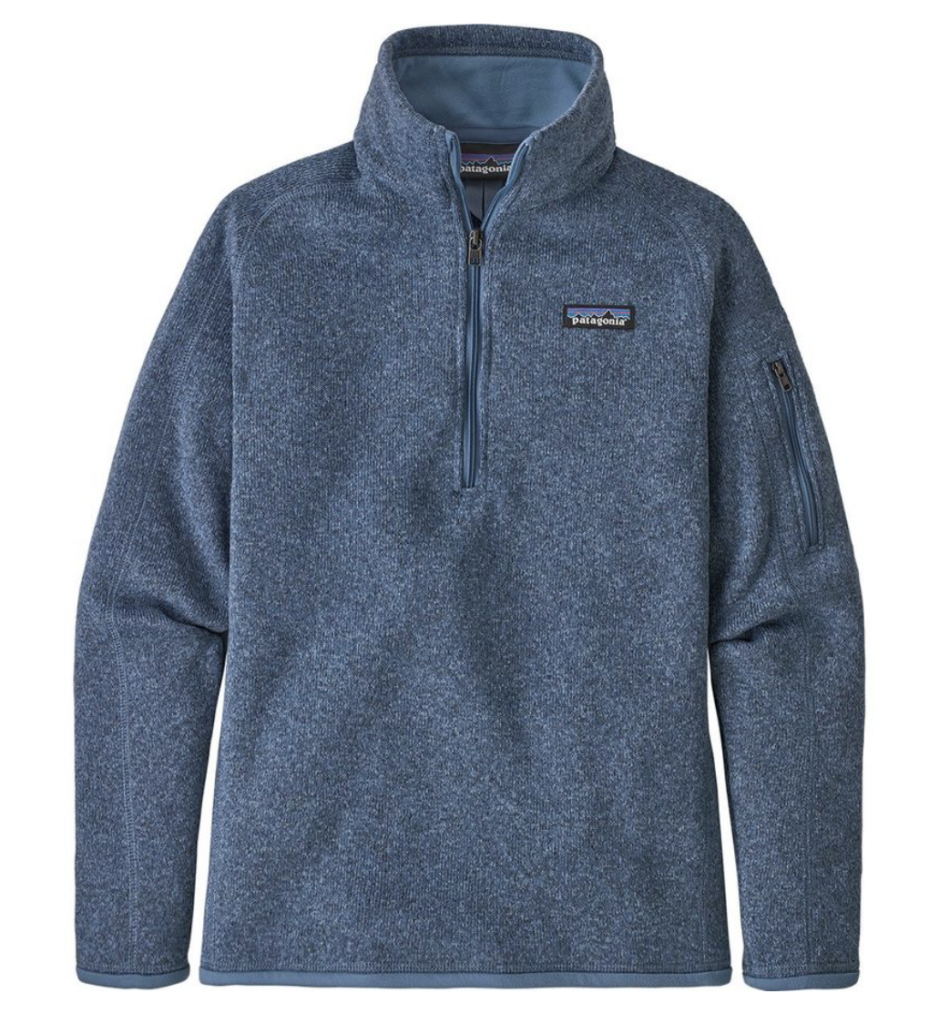
Order on Patagonia | Backcountry | REI
A mid-layer is a very important item to have, especially when the temperatures drop. Good mid-layers are made of either Merino wool or fleece, which provide a thick thermal layer between your outerwear and your base layers. Our pick for the best fleece sweater that will keep you warm and last for many hikes to come is Patagonia’s 1/4 Zip Better Sweater – it’s super warm, cozy, and durable for cold days on the trails.
Check prices: Women’s Version | Men’s Version
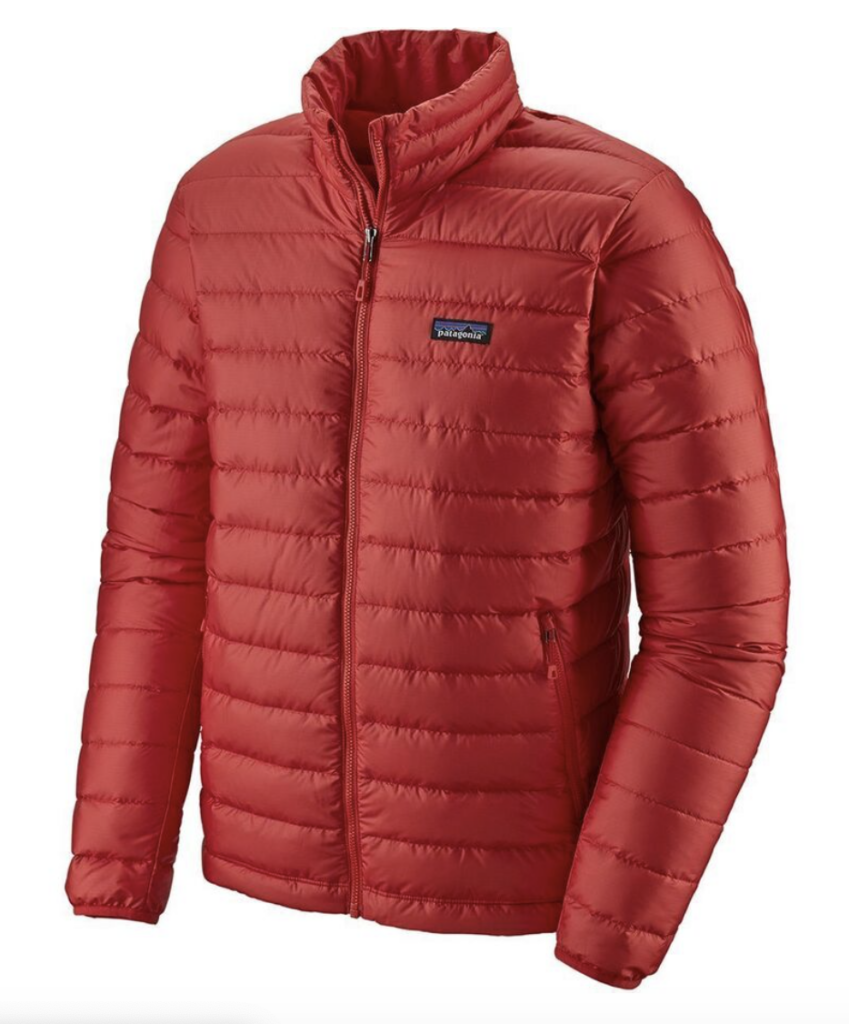
Order on Patagonia | Backcountry | REI
Some hikers prefer a down puffer jacket as a mid-layer instead of fleece, which is usually heavier and thicker. Our favorite down mid-layer is the Patagonia Down Sweater, which fits like a glove and traps heat in a super lightweight shell.
Check prices: Women’s Version | Men’s Version
Waterproof Outer Shell or Ski Jacket
Having an outer shell jacket that keeps you warm and dry is an absolute necessity while hiking in snow. While there are tons of options for outerwear that’s suitable for the cold, we especially love Burton jackets. Originally made for snowboarders, these jackets offer excellent protection from the elements without being too bulky.
If you’re in the market for a winter coat that you can also ski and snowboard in, check out our guide to the best ski jackets.
Bottoms
Base Layer
When it comes to base layers, don’t forget about your legs! For keeping your legs warm, we recommend the corresponding Smartwool Merino 250 bottoms. These are excellent, form fitting bottoms made of Merino wool that can be worn underneath your favorite pair of hiking pants.
Check prices: Women’s Version | Men’s Version
Comfortable Hiking Pants

Order on PrAna | Backcountry | REI
In cold weather, it’s important to layer up on your legs as well as your upper body. That’s why we always recommend wearing a base layer legging underneath hiking pants. Our go-to hiking pants are from PrAna – the Halle Pants for women and the Brion Pants for men. These all-purpose hiking pants perform excellently on trails, and work for all seasons, not just winter.
Check prices: Women’s Version | Men’s Version
Footwear
Waterproof Hiking Boots

Order on: Salomon | Backcountry | REI | Amazon
We love and highly recommend Salomon hiking boots for all of your winter adventures. They’ve got super durable, uppers and fantastic treads on the soles for all kinds of terrain and weather. They’ve got a variety of different choices, but their waterproof boots are your best bet for wet and frozen winters.
If you get cold toes easily or just want an extra protective layer on your feet for your winter adventures, we’d recommend considering a pair of insulated hiking boots.
Crampons or Micro Spikes
You may need additional traction on your feet if you’re going to be hiking in icy areas. Opt for a pair of micro spikes or crampons to get that extra leverage in slippery areas. Micro spikes are a bit milder and less jagged than crampons, but they’re often more lightweight.
For hiking on icy terrain, we recommend Yaktrax ICEtrekkers Diamond Grip Traction Cleats. They easily fit any boot style and size to keep you from sliding on the ice.
Other Outerwear & Gear for Hiking in Snow
Warm Hat or Hood
A good head covering is a very important piece of gear for winter hiking to protect your head and ears from the cold. You can opt for a thermal hat – any warm winter beanie will do – or a jacket with a hood that’s insulated. The most important thing is keeping your head warm with something comfortable!
Thermal Neck Gaiter
A thermal neck warmer or neck gaiter can help reduce the risk of windburn and frostbite on your face and neck. We’ve got an entire guide on thermal neck warmers & gaiters that are great for cold weather. The bottom line? Our favorite for winter hiking is the Smartwool 250 Neck Gaiter.
Gloves
A good pair of gloves will keep your hands and fingers dry too so they don’t have to stay bundled up in your jacket. You may need to use your hands to climb in some difficult hiking areas with snow, so waterproof gloves are absolutely necessary for hiking in snow.
Luckily, we’ve got a complete guide on the best winter gloves to keep your hands toasty and warm. You may also want to consider rechargeable heated ski gloves if your hands get extra cold in the winter.
Sunglasses
If you are hiking in snow, you may find that the sun is even more intense than during other times of year as it reflects off the snow on the ground. Bring your favorite pair of sunglasses or snag a pair of ski-specific sunglasses for winter wear!
Hand Warmers
Hand warmers are great for winter hiking because they provide additional heat inside of your gloves or pockets. They’re usually small and fit easily in tight spaces. You can buy a pack of traditional hand warmers from HotHands, but if you hike often, we’d recommend grabbing a pair of rechargeable hand warmers that you can use over and over again on the trails.
Thermal Water Bottle

Order on Hydro Flask | Backcountry | REI | Amazon
Like we mentioned earlier, we strongly recommend having a thermal, insulated water bottle to keep hot water during your winter hikes. All of our go-to thermal drinkware is from Hydro Flask – they come in all different sizes and colors for wherever your adventures may bring you. Our Hydro Flasks keep water nice and hot for several hours, which is a great way to warm yourself up if you’re feeling extra cold.
Trekking Poles
Trekking poles can help provide additional traction and stability on icy and snowy terrain, and are great companions for hiking in snow. We love Black Diamond trekking poles for all of our hiking adventures, year round. They’re collapsible and lightweight, making it easy for you to store them in a backpack when you’re not using them.
Thermal Phone Case
If you’ve ever been out in the cold with your phone before, you’ll know the battery often drains MUCH more quickly when it’s frigid out. A thermal phone case like this one can help you keep your phone alive on cold days, making sure you have access to a GPS or connectivity in case you need it.
GPS System
If you’re going to be doing a lot of hiking in winter, you may want to invest in a GPS system to log where you are and follow trails if your phone doesn’t have service or dies in the cold. Plus, when there’s snow on the ground, it can be hard to follow trails and stay on your intended route without some GPS help.
Garmin makes some great GPS options that you can purchase and take along with you so you always know where you’re headed.










